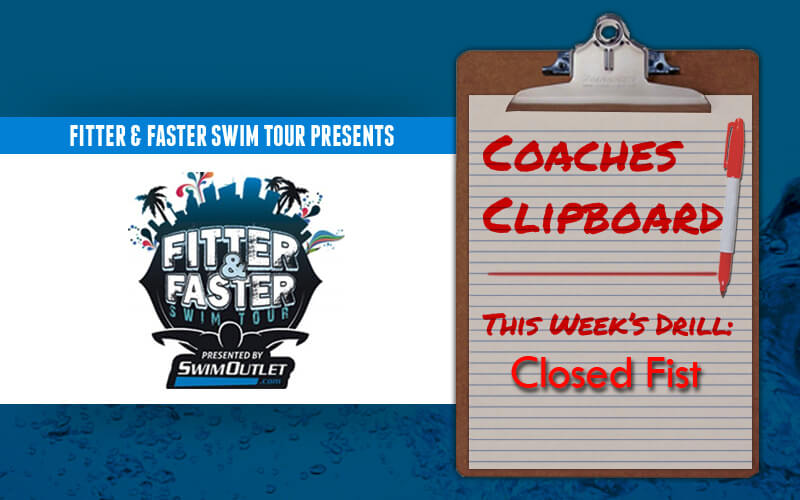Fitter And Faster Swim Drill Of The Week: Closed Fist Drill

Welcome to the “Swim Drill of the Week” sponsored by The Fitter and Faster Swim Tour presented by Swimoutlet.com. Swimming World will be bringing you a drill, concept, or tip that you can implement with your team on a regular basis. While certain weeks may be more appropriate for specific levels of swimming (club, high school, college, or masters), Drill Of The Week excerpts are meant to be flexible for your needs and inclusive for all levels of swimming.
This week’s drill is Closed Fist Drill, which is a drill that is used to work on catch efficiency in all strokes. The drill is exactly as it sounds: for a portion of a length of swimming, your athletes will pull through the water with closed fists. Taking away their hands, swimmers will be raise awareness to how they are using their forearms through the catch phase of their pull as well as to how much “feel” they do get from having their hands initiate contact with the water.
While most coaches and swimmers have likely seen some form of this drill, in this itineration we suggest swimming with closed fists for only half of the length you are doing the drill before switching back to normal stroke. By switching halfway, swimmers get immediate feedback on their catch and can more readily distinguish when they may be slipping through the catch phase of their pull.
When doing this drill, it is important to note how swimmers are adapting to the closed fist pull. For example, in freestyle you don’t want to see them overcompensate by increasing their kick intensity or adjusting to a poor body position. Rather, they should be focused on using their core and length of their stroke to maintain a good body position and maintain a high elbow catch by “feeling” the water more with their forearm. Once they open up their hands, look for the length of the stroke and their initial point of contact with the water to improve. Simple enough to use across all strokes, this drill can be a great way to get your swimmers more aware of how efficient their pull is and how they can continue to grab more water with each stroke. Happy swimming!
All swimming and dryland training and instruction should be performed under the supervision of a qualified coach or instructor, and in circumstances that ensure the safety of participants.




My fave drill Joe Stott